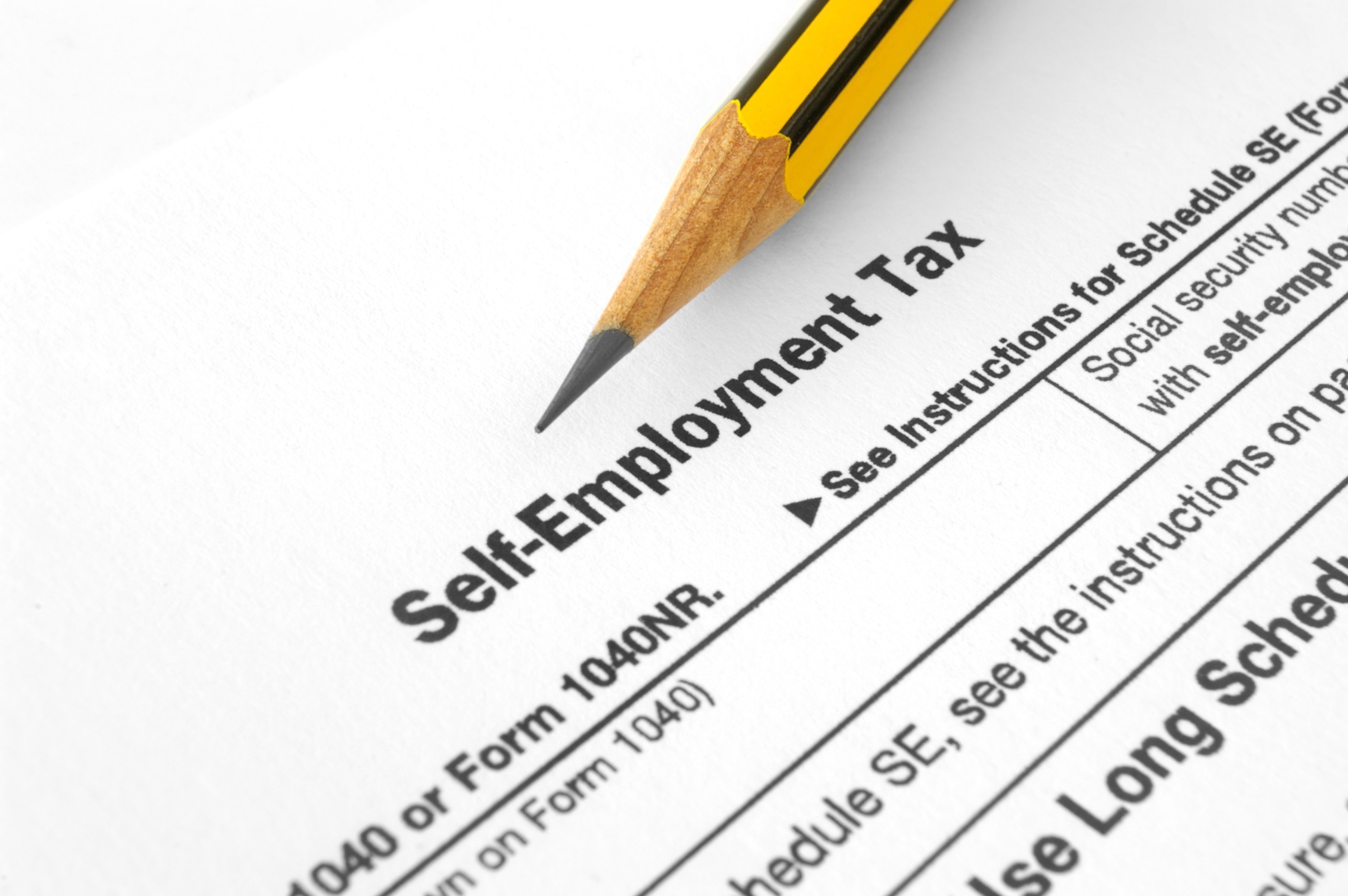Qualify for Roth IRA Contributions by Lowering Your Income
These seven tips can help you qualify for Roth IRA contributions if your income exceeds the cutoff (MAGI).


Is your income too high to qualify for Roth IRA contributions? There are ways to lower your taxable income in order to make a contribution. Making other changes may also help reduce your income taxes when it comes time to file next year. A Roth IRA can give your retirement strategy a real boost, so it's worth taking the time to see if you can contribute to one.
Do I qualify for Roth IRA contributions?
Question: What is the definition of "modified adjusted gross income" (MAGI) to qualify to contribute to a Roth IRA? I'm close to the income limit and am trying to figure out how to lower my MAGI so I can qualify to make contributions for this tax year.
Answer: The definition of modified adjusted gross income varies depending on the tax break. The calculation to qualify for Roth IRA contributions starts by taking your adjusted gross income from the bottom of page 1 of Form 1040 and adding back certain deductions and exclusions you claimed on your tax return.

Sign up for Kiplinger’s Free E-Newsletters
Profit and prosper with the best of expert advice on investing, taxes, retirement, personal finance and more - straight to your e-mail.
Profit and prosper with the best of expert advice - straight to your e-mail.
For detailed steps, see our article on how to calculate your Modified Adjusted Gross Income (MAGI). For a worksheet to help with the calculation, see IRS Publication 590-A, Individual Retirement Arrangements.
How much can I contribute to a Roth IRA?
To make the full $7,000 (or $8,000 if you're age 50 or older) contribution to a Roth IRA for 2025, your modified adjusted gross income must be less than $150,000 if you're single or less than $236,000 if you're married filing jointly.
The contribution amount gradually phases out as your income gets higher, and in 2025, you can’t make Roth IRA contributions if your MAGI is more than $165,000 if single or $246,000 if married and filing jointly. For more details, such as the limits for those married and filing separately and 401(k) limits, be sure to review IRS guidance on the amount of contributions you can make.
The deadline for contributing to a 2025 Roth IRA is Wednesday, April 15, 2026.
How to lower your MAGI for the 2025 tax year
There are several ways to reduce your 2025 modified adjusted gross income so that you can qualify for Roth contributions.

1. Contribute to a Health Savings Account (HSA)
If you have a health savings account (HSA) in 2025, you may continue to make contributions to your 2025 account until April 15, 2026. Your HSA must have a deductible of at least $1,650 for self-only coverage or $3,300 for family coverage.
You can contribute up to $4,300 for 2025 if you have self-only coverage or $8,550 if you have family coverage, plus a $1,000 catch-up contribution if you're 55 or older. Your contributions are pretax if you make them through your employer or tax-deductible if you make them on your own.
HSAs are powerful tax and retirement planning tools. For example, did you know that HSAs can reimburse you for Medicare premiums paid?
2. Make the most of deductions that reduce your AGI
See if you qualify for any other deductions on page 1 of your Form 1040 that aren't added back into the MAGI calculation. For example, if you are a member of the Armed Forces on active duty and you move because of a permanent change of station, you may be eligible to claim a moving expense tax deduction. You can also review whether you qualify for the most overlooked tax deductions, credits and exemptions.

3. Reduce any income from self-employment
If you have any income from your own business, even if you just do freelance work on the side, make the most of tax breaks for the self-employed. See the Instructions for Schedule C for more information about which expenses you can deduct. For more information, see Most Overlooked Tax Breaks for the Self-Employed.
For next year, consider signing up for one of the tax-advantaged accounts for the self-employed, such as a SEP IRA or a solo 401(k). The 2025 contribution limit for the SEP IRA is a whopping $70,000. Contributions to these tax-deductible retirement plans can reduce your AGI.
4. Manage taxes on investment earnings
If you have significant investments, there are steps you can take to reduce taxes on your investment earnings. For example, the strategy known as tax-loss harvesting can benefit you across multiple tax years. In tax-loss harvesting, you can sell long-term positions that have done poorly (resulting in capital losses) and substitute them with similar investments.
You can then use that loss to offset the taxes on investment gains from the same year. If your losses exceed your gains, you can use the excess to offset up to $3,000 of ordinary income each year, with any remaining losses carried forward to future years. Tax loss harvesting can get complicated if you have multiple investments, so work with a financial or tax planner for extra help.

5. Make pretax contributions to a 401(k), 403(b), 457 or Thrift Savings Plan
The deadline to contribute to these pretax plans is December 31, 2025, for the 2025 tax year. Your employer deposits these contributions and, unlike IRAs, you do not get any additional time to make a contribution.
The inflation adjustments for the 2025 401(k) contribution limits give you more opportunity to save. Eligible taxpayers can contribute $23,500 to these accounts in 2025. In addition to 401(k) accounts, this limit applies to employees who participate in most 457 plans and the federal government Thrift Savings Plan. The catch-up contribution limit for those age 50 or older participating in those plans will remain $7,500 for 2025.
6. Contribute to a health care flexible-spending account (FSA)
Like a 401(k), you have until the end of the calendar year to make contributions to your 2025 FSA. Although you will normally sign up for an FSA during open enrollment, exceptions to this rule include major life changes, called qualifying events. These events include getting married, divorced, moving or having a baby, for example.
You can also start enrollment decisions afresh if you start a job with a new employer. You generally can't contribute to an FSA and an HSA in the same year, unless you have an HSA-compatible FSA.
In the meantime, if you have a 2025 FSA with a grace period, you may still have FSA money to spend after December 31, 2025. Check your plan to see if you have a grace period until March 15, 2026, to spend the funds. Some plans will also allow you to file claims for reimbursement until March 31, 2026.

7. Contribute to a dependent-care flexible-spending account (FSA)
You may be able to contribute up to $2,500 pretax to a dependent-care FSA to pay for the cost of caring for one child younger than 13 while you and your spouse work. If your spouse contributes to a dependent-care FSA, your household can claim up to $5,000 in expenses.
You generally must sign up to make those contributions during open enrollment in the fall, but if you have a qualifying event, you may be able to make changes midyear.
If all else fails, make a backdoor Roth contribution
If you still don't fall below the modified adjusted gross income cutoff, you can make a non-deductible IRA contribution and then convert it to a Roth. If you don't have any other money in a traditional IRA, you'll have to pay taxes only on the earnings when you convert.
If you do have other IRA money, your tax liability will be based on the ratio of nondeductible contributions to the total balance in all of your traditional IRAs. This strategy is tricky and not always the best option, so you may want to work with a financial planner or adviser. Read How a Backdoor Roth IRA Works (and Its Drawbacks) for details.
Roth distributions have utility beyond income
A Roth IRA will provide a tax-free stream of income when you retire and save you the pressure of taking required minimum distributions (RMDs) and managing income from distributions you don't need or want. Another bonus is that income from Roth distributions won't make you vulnerable to the income related monthly adjustment amount (IRMAA).
If you can't afford to convert you entire IRA account at once, you can convert the balance over a period of years with a partial conversion. Remember that even a partial Roth IRA conversion could lead to a temporary rise in income and trigger the IRMAA two years down the road. Timing any IRA conversion, full or partial, is important to avoid those Medicare surcharges.
Related Content
Profit and prosper with the best of Kiplinger's advice on investing, taxes, retirement, personal finance and much more. Delivered daily. Enter your email in the box and click Sign Me Up.

As the "Ask Kim" columnist for Kiplinger's Personal Finance, Lankford receives hundreds of personal finance questions from readers every month. She is the author of Rescue Your Financial Life (McGraw-Hill, 2003), The Insurance Maze: How You Can Save Money on Insurance -- and Still Get the Coverage You Need (Kaplan, 2006), Kiplinger's Ask Kim for Money Smart Solutions (Kaplan, 2007) and The Kiplinger/BBB Personal Finance Guide for Military Families. She is frequently featured as a financial expert on television and radio, including NBC's Today Show, CNN, CNBC and National Public Radio.
- Ellen B. KennedyRetirement Editor, Kiplinger.com
- Donna LeValleyRetirement Writer
-
 Last Call for Fortnite Refunds: Parents Can Still File a Claim
Last Call for Fortnite Refunds: Parents Can Still File a ClaimThe FTC is sending out $126 million in refunds to families whose kids were charged for unwanted items in Fortnite — and there’s still time to file a claim.
-
 Stock Market Today: Stocks Swing as Trump Scraps Canada Trade Talks
Stock Market Today: Stocks Swing as Trump Scraps Canada Trade TalksDespite a mid-afternoon slip, the S&P 500 and Nasdaq ended the day at new record highs.
-
 Why Smart Retirees Are Ditching Traditional Financial Plans
Why Smart Retirees Are Ditching Traditional Financial PlansFinancial plans based purely on growth, like the 60/40 portfolio, are built for a different era. Today’s retirees need plans based on real-life risks and goals and that feature these four elements.
-
 Will an AI Robot Take Care of You in Old Age?
Will an AI Robot Take Care of You in Old Age?AI Robots may be just the help older adults and their caretakers need for a host of tasks. Just don't expect it to be a cute little humanoid — yet.
-
 Technology Unleashes the Power of Year-Round Tax-Loss Harvesting
Technology Unleashes the Power of Year-Round Tax-Loss HarvestingTech advancements have made it possible to continuously monitor and rebalance portfolios, allowing for harvesting losses throughout the year rather than just once a year.
-
 The Fiduciary Firewall: An Expert's Five-Step Guide to Honest Financial Planning
The Fiduciary Firewall: An Expert's Five-Step Guide to Honest Financial PlanningArmed with education and awareness, you can avoid unethical people in the financial industry by seeking fee-only fiduciaries and sharing your knowledge with others.
-
 I'm 52 With $2.1 Million in Retirement Savings: Can I Afford a Second Home?
I'm 52 With $2.1 Million in Retirement Savings: Can I Afford a Second Home?Buy a second home now, or wait until retirement? It depends.
-
 What to Do After Losing Your Spouse: An Expert Guide
What to Do After Losing Your Spouse: An Expert GuideSome financial decisions need to be made sooner rather than later. In honor of International Widows' Day, here's what you need to know about gathering documents and contacting government agencies and financial institutions.
-
 I'm a Financial Planner: This Is the Key to Successful Retirement Planning
I'm a Financial Planner: This Is the Key to Successful Retirement PlanningYou have to focus on what you can control — the inputs — and not obsess over what you can't control — the output. Here's how to do that.
-
 Summer Is Made for Sun, Fun … and Estate Planning Conversations
Summer Is Made for Sun, Fun … and Estate Planning ConversationsNow is the time to discuss estate planning with your loved ones to ensure the Great Wealth Transfer is efficient, tax-aware and in line with your legacy goals — not Uncle Sam's.